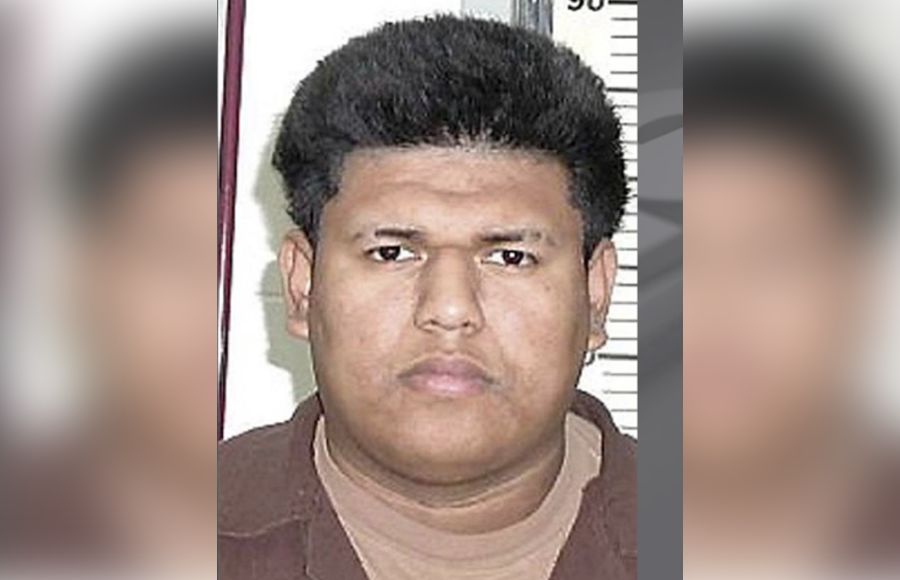
CENTRAL ISLIP, N.Y. – A leader of the notorious MS-13 street gang was sentenced to 68 years in federal prison this week after pleading guilty to a series of brutal crimes, including eight murders and three attempted murders that terrorized communities across Long Island.
Alexi Saenz, 29, known by the gang name “Blasty,” was the head of the Brentwood-Central Islip chapter of the MS-13 Sailors Locos Salvatruchas Westside clique. His sentencing in federal court marks a significant development in a years-long law enforcement effort to dismantle one of the gang’s most violent factions operating in the U.S.
Prosecutors say Saenz oversaw and directly participated in a reign of violence spanning from 2015 to 2017, targeting perceived rivals and those who violated gang rules. The crimes took place largely in the Suffolk County towns of Brentwood and Central Islip, where MS-13’s presence has long been a source of community fear.
Among the most high-profile victims were Nisa Mickens, 15, and Kayla Cuevas, 16, two high school students who were attacked with a baseball bat and machetes in September 2016 after being marked for death by gang members. The girls were walking near their homes in Brentwood when they were ambushed and killed. Their murders shocked the nation and brought renewed attention to MS-13’s activities in the region.
Saenz also admitted to ordering or participating in the killings of six other individuals, along with multiple attempted murders, arson, and drug trafficking. Law enforcement officials described his actions as central to maintaining MS-13’s code of intimidation and control over its territory.
The sentencing came after Saenz pleaded guilty in 2024 as part of a cooperation strategy that helped secure other convictions. Prosecutors had originally sought a 70-year sentence, but the judge imposed a 68-year term, citing Saenz’s decision to plead guilty and assist in persuading his brother, Jairo Saenz, another gang member, to do the same.
Federal investigators detailed how Saenz orchestrated attacks using machetes, firearms, and other weapons, often targeting teens and young adults suspected of being affiliated with rival gangs. Evidence presented in court also revealed his continued pattern of misconduct while in custody, including contraband possession and disciplinary infractions, undermining claims of remorse presented by his defense.
The case was prosecuted in the Eastern District of New York as part of a broader effort by federal and local authorities to dismantle MS-13 operations on Long Island. Three additional high-ranking members of the same clique previously pleaded guilty to nine murders earlier in 2025.
MS-13, or Mara Salvatrucha, originated in Los Angeles in the 1980s and has grown into a transnational criminal organization with thousands of members in the U.S. and Central America. Its presence in Long Island has led to multiple joint task force crackdowns in recent years.
The resolution of Saenz’s case represents a significant milestone in those efforts, with authorities expressing hope that the sentence will send a strong message of deterrence to remaining gang affiliates and reaffirm the government’s commitment to protecting vulnerable communities from gang violence.
Saenz will serve his sentence in a high-security federal facility without the possibility of parole.
Top Q&A: MS-13 Gang Leader Sentenced for Long Island Murders
Q: Who is Alexi Saenz?
A: Alexi Saenz, also known by the gang alias “Blasty,” is a former leader of the MS-13 Sailors Locos Salvatruchas Westside clique, responsible for a series of violent crimes in Brentwood and Central Islip, New York.
Q: What crimes did he commit?
A: Saenz pleaded guilty to eight murders, three attempted murders, drug trafficking, arson, and firearms offenses. His crimes were part of MS-13’s campaign of violence against rivals and perceived enemies.
Q: Who were some of the victims?
A: Among the victims were Nisa Mickens (15) and Kayla Cuevas (16), two teenage girls from Brentwood who were brutally murdered in 2016. Their deaths gained national attention and became a rallying point for anti-gang efforts.
Q: What sentence did Saenz receive?
A: He was sentenced to 68 years in federal prison. He is not eligible for parole and will serve the full term in a high-security facility.
Q: Why was the sentence 68 years instead of life or the death penalty?
A: Although prosecutors originally sought a 70-year term, the judge issued a 68-year sentence due in part to Saenz’s guilty plea and his cooperation in convincing his brother to also plead guilty.
Q: What is the significance of this case?
A: The sentencing is seen as a major victory in the long-running effort to dismantle MS-13’s operations on Long Island, where the gang had been involved in a wave of deadly violence.
Q: Has anyone else been prosecuted in this investigation?
A: Yes. In addition to Saenz, three other high-ranking members of his clique have pleaded guilty to nine murders. Several other members have also been indicted and sentenced in recent years.
Q: What is MS-13?
A: MS-13 (Mara Salvatrucha) is a transnational criminal gang with roots in Los Angeles and Central America. It is known for extreme violence, including machete killings, and has thousands of members across the U.S.
Q: Why was MS-13 active on Long Island?
A: The gang has exploited vulnerable immigrant communities, recruited local youth, and used intimidation to control territories in Suffolk County towns such as Brentwood and Central Islip.
Q: What’s next in the fight against MS-13?
A: Law enforcement officials say they will continue targeting gang leadership, prosecuting remaining members, and working with local communities to prevent further recruitment and violence.


